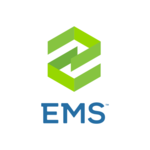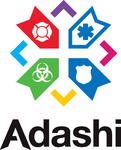What Is EMS Emergency Medical Services Software?
Software for emergency medical services (EMS) is a technological solution created especially to meet the demands of the EMS sector. This all-inclusive software aids EMS providers in increasing efficiency, improving patient care, and streamlining their operations. Electronic patient care reporting (ePCR) for recording patient data, scheduling and dispatching for controlling resources and response times, and billing and reimbursement for monitoring and handling payments are some of the main functions of EMS Emergency Medical Services software.
Furthermore, modules for inventory control, vehicle maintenance, reporting, and analytics are frequently included in EMS software. In addition to better tracking and managing their supplies and equipment, this enables EMS providers to evaluate data to make well-informed decisions and pinpoint areas in need of improvement. EMS Emergency Medical Services software is a versatile and practical tool for EMS professionals who are frequently on the go because it can be utilized on both desktop computers and mobile devices.
Additionally, it interfaces with other systems, like 911 dispatch centers and hospital electronic health records (EHRs), facilitating a smooth information flow and enhancing collaboration amongst various healthcare providers. EMS agencies can gain a lot from investing in EMS software, such as better data management, increased operational efficiency, better communication and collaboration, and improved patient care.
Having a dependable and cutting-edge software solution is crucial for maintaining competitiveness and offering patients high-quality care given how quickly the EMS sector is changing. Selecting an EMS Emergency Medical Services software system that offers the most pertinent features requires careful consideration of your agency's unique requirements. Additionally, it should be cloud-based for convenient access and data storage, user-friendly, and customisable. You can optimize your operations and give your community the finest care possible with the correct EMS software.
What Are The Recent Trends In EMS Emergency Medical Services Software?
The healthcare sector has been greatly impacted by recent technological developments, particularly in the area of emergency medical services (EMS). EMS organizations are always looking for ways to use technology to enhance patient care, communication, and efficiency. Consequently, there has been a sharp rise in the need for EMS emergency medical care software in recent years.
The incorporation of mobile technology is one of the main developments in EMS emergency medical care software. EMS agencies are using software that enables their staff to access critical information and interact in real-time as a result of the growing usage of smartphones and tablets. In addition to facilitating better communication amongst EMS personnel, this also enables more rapid response times and precise patient care documentation.
Electronic Health Record (EHR) deployment is another development in EMS software. Paper records are no longer necessary thanks to EHR systems, which also streamline the documentation process by enabling the safe exchange and storing of patient data. In addition to saving EMS personnel time, this guarantees patient data accessibility and accuracy.
A move toward cloud-based EMS software solutions has also occurred in recent years. This eliminates the need for on-site servers and enables regular updates and maintenance in addition to easier access to data and information. Additionally, EMS personnel can access information while on the go because to cloud-based software's frequent mobile adaptability.
The usage of analytics and data management tools is another new trend in EMS software. EMS agencies can make data-driven decisions to increase productivity and patient care by gathering and evaluating data, which can provide them with important insights into how they operate. Lastly, the emphasis on design and user experience is another significant trend in EMS software.
Given the high-pressure and time-sensitive circumstances in which EMS personnel operate, software must have an intuitive user interface. In addition to increasing productivity, this lowers the possibility of mistakes and raises user happiness.
Benefits Of Using EMS Emergency Medical Services Software
A complete solution created especially to satisfy the requirements of emergency medical services providers is EMS emergency medical services software. To increase productivity and guarantee the best possible patient results, our software optimizes all facets of administrative and patient care procedures. Implementing EMS emergency medical services software has the following main advantages:
1. Improved Patient Care: Providing high-quality patient care is one of the main advantages of utilizing EMS emergency medical services software. The program makes it possible to quickly and accurately record patient data, such as vital signs, prescription drugs, allergies, and medical history. Medical personnel have easy access to this information, which enables them to make well-informed judgments and administer timely and appropriate therapy.
2. Better Communication: EMTs, paramedics, and other medical personnel may share information in real time thanks to EMS software, which makes it easier to communicate effectively in emergency medical situations. This lowers the possibility of misunderstandings and facilitates prompt and precise patient care decision-making.
3. Simplified Administrative Procedures: By automating administrative duties like scheduling, invoicing, and filing insurance claims, EMS software lessens the workload for employees and removes the chance of mistakes. This enhances the precision and effectiveness of these procedures in addition to saving time.
4. Enhanced Efficiency: EMS software removes the need for manual data entry and paperwork by smoothly integrating many functions. This increases productivity and lowers the possibility of mistakes, freeing up healthcare providers to concentrate on delivering high-quality patient care.
5. Improved Resource Management: Administrators can monitor resource usage and pinpoint opportunities for development thanks to the real-time data and analytics that EMS software offers. This guarantees efficient resource allocation, lowering expenses and increasing operational effectiveness.
6. Compliance With Regulatory Standards: EMS software is made to meet regulatory standards and specifications, guaranteeing that all paperwork and procedures adhere to administrative and legal directives. By doing this, the organization's funds and reputation are safeguarded from the possibility of penalties and fines.
Important Factors To Consider While Purchasing EMS Emergency Medical Services Software?
There are a number of crucial aspects to take into account while investing in EMS Emergency Medical Services Software. Purchasing the appropriate software is vital for emergency medical teams to improve response times and streamline operations. Before making your purchase, bear the following important points in mind:
1. User-Friendly Interface: Medical professionals should be able to easily access and utilize the program thanks to its user-friendly and intuitive interface. In crucial circumstances, complicated and perplexing software might cause errors and slow down reaction times.
2. Extensive Services: Seek out a software program that provides a variety of services, including scheduling, billing, dispatch, patient record management, and reporting. By doing this, it will be possible to effectively handle and control every facet of emergency medical services within a single system.
3. Customization Options: The software should be able to meet the specific needs of any EMS department. Seek out a software solution that is adaptable to your unique processes and operations.
4. Compatibility And Integration: Finding out if the program works with your existing systems and technologies is essential. To improve accuracy and efficiency, it should also be able to interface with other software and gadgets, like medical equipment and communication systems.
5. Training And Support: To help your team use the program efficiently and troubleshoot any issues that may come up, a reputable EMS software vendor should give sufficient training and continuing support. This will guarantee a seamless transition and effective software use.
6. Data Security: In the medical industry, patient privacy is crucial, so be sure the software has strong security features in place to safeguard private information. This covers frequent backups, access limits, and data encryption.
7. Scalability: You should spend money on software that can expand along with your emergency medical services division. Choose a scalable solution that can support your future growth goals without requiring expensive replacements or upgrades.
What Are The Key Features To Look For In EMS Emergency Medical Services Software?
There are a number of important factors to take into account while choosing the best EMS Emergency Medical Services Software for your company. These characteristics will improve the general standard of patient care in addition to guaranteeing effective daily operations. The following are the most important characteristics of EMS Emergency Medical Services Software:
1. User-Friendly Interface: In emergency situations where every second counts, having an interface that is easy to use is essential. Choose software that is simple to use and comprehend so that emergency medical services personnel can get the information they require fast.
2. Comprehensive Patient Management: EMS professionals should be able to collect and monitor patient data, medical history, and vital signs thanks to the software's comprehensive patient management system. This feature guarantees accurate and prompt patient care.
3. Real-Time Communication: In an emergency, being able to communicate in real-time is crucial. To help EMS professionals maintain contact with the hospital and other medical staff, look for software that includes integrated communication features including voice calls, video conferencing, and messaging.
4. Cloud-Based Solutions: Information can now be accessed more easily from any location at any time thanks to the development of cloud technology. Selecting cloud-based emergency medical services software guarantees that information can be safely accessed and updated instantly, enhancing provider cooperation and efficiency.
5. Mobile Compatibility: EMS providers must be able to access information while on the go in the fast-paced world of today. In order to facilitate EMS providers' access to vital information while in the field, select software that works with mobile devices like smartphones and tablets.
6. Integration With Other Systems: Workflows can be streamlined and redundant data entry can be removed using EMS software that interacts with other systems, such as ePCR, invoicing, and scheduling software. This lowers the possibility of mistakes and saves time.
7. Customization Options: Software that enables customization is crucial because every EMS business has different requirements. For best results, look for features that may be customized to meet the unique needs of your company.
8. Adherence To HIPAA Regulations: The Health Insurance Portability and Accessibility Act (HIPAA) governs how patient data is used and shared in the medical field. To preserve patient privacy, be sure the EMS software you select complies with HIPAA laws.
9. Training And Assistance: For EMS software to be implemented and used continuously, effective training and technical assistance are essential. To help your company make the most of the software, look for software vendors who provide thorough training and dependable support. You can now choose the best EMS Emergency Medical Services Software that fits the unique requirements of your company with confidence if you keep these important qualities in mind. Keep in mind that you may greatly improve patient care and increase the effectiveness of your EMS operations by investing in dependable and comprehensive software.
Why Do Businesses Need EMS Emergency Medical Services Software?
For emergency response organizations and companies in the healthcare sector, EMS Emergency Medical Services Software is an essential tool. Emergency medical services can effectively and efficiently manage their resources and respond to emergencies thanks to this software, which was created especially to support their operations.
1. Optimize Response Time And Streamline: Operations Improving response times and streamlining operations are two of the main reasons why companies require EMS Emergency Medical Services Software. Emergency responders may swiftly find and dispatch the closest available ambulances and resources thanks to capabilities like computer-aided dispatch (CAD) and automatic vehicle locating (AVL) in this program. This leads to quicker reaction times, which can be crucial in situations where life or death is at stake.
2. Effective Management Of Resources: Additionally, EMS software gives companies a single platform for managing their personnel, equipment, and ambulances. This enables them to monitor their resources' position and availability in real-time, guaranteeing their effective and efficient use. Additionally, it helps companies to spot any operational gaps like a lack of resources in a certain area and take the appropriate action to close them.
3. Improved Documentation And Communication: The capacity of EMS software to enable smooth documentation and communication between responders, dispatchers, and other stakeholders is another essential feature. All pertinent parties are connected and have real-time access to vital information thanks to this software's single interface for all communication channels, including messaging, phone, and radio. Additionally, it makes it possible to effectively capture incident reports, patient evaluations, and other crucial information that can be safely accessed and shared.
4. Sturdy Data Analysis And Management: Businesses may gather and examine data regarding incidents, response times, and patient outcomes thanks to the powerful data management and analysis tools included with EMS software. Trends can be found, performance can be assessed, and data-driven choices may be made to raise the caliber of services. To show compliance and service quality, businesses can also create reports and distribute them to stakeholders, including regulatory agencies and healthcare partners.
5. Guarantees Quality Assurance And Compliance: Adherence to rules and quality standards is essential in the healthcare sector. With capabilities like electronic patient care reports (ePCR), which enable precise and prompt recordkeeping, EMS software assists companies in maintaining compliance. By monitoring and evaluating several performance measures, such response times and patient outcomes, and pinpointing areas for improvement, it also helps with quality assurance.
How Much Time Is Required To Implement EMS Emergency Medical Services Software?
The size and complexity of your company, the particular features and modules you are adopting, and the degree of customisation needed can all affect how long it takes to develop EMS Emergency Medical Services Software. The implementation procedure, however, typically takes four to twelve weeks.
Your software provider will collaborate closely with your team during the first phase to comprehend the workflow and procedures of your company and customize the software to meet your unique requirements. Depending on the degree of customization needed, this could take two to four weeks. Data migration comes next after the program has been set up and customized for your company.
This entails moving your current data from outdated software to the new program. Depending on the complexity and volume of data, this could take two to four weeks. The software will undergo testing following the data migration to make sure all of its features and modules are operational and satisfy the needs of your company.
Depending on the amount of tests and any necessary revisions, this could take one to two weeks. Your staff will receive training to learn how to use the program efficiently when the testing period is over. The number of users and their degree of technological skill can affect how long the training takes.
EMS Emergency Medical Services Software deployment might take anything from four to twelve weeks in total. But it's important to remember that software implementation is a continuous process, and your team will keep learning and improving how to utilize the program over time.
What Is The Level Of Customization Available In EMS Emergency Medical Services Software?
Customization is essential to EMS Emergency Medical Services Software in order to guarantee that the program satisfies the user's unique requirements. Having software that is easily customizable to each organization's specific needs is crucial given the constantly shifting healthcare sector. Depending on the software source, every EMS Emergency Medical Services software offers different levels of flexibility.
Nonetheless, the majority of software provides a great degree of customisation, enabling the user to alter and set up the program to suit their own requirements. The ability to build configurable forms and templates is one of the main areas of customization in EMS software. With this capability, customers can create forms that best fit the documentation and workflow requirements of their company.
This can include practice-specific elements like prescription lists, treatment plans, and patient evaluation forms. Integrating with other programs and systems is a crucial component of customization. EMS software can be tailored to easily link with electronic health records, billing systems, or scheduling software, saving time and lowering the possibility of mistakes.
Furthermore, a lot of EMS software vendors give analytics and reporting customization capabilities, enabling users to produce reports that are specifically suited to the requirements of their company. This can contain particular metrics, dashboards, and visualizations that offer information about how well the company is performing. Additionally, EMS software frequently offers user role and permission settings that are adjustable.
This feature improves security and privacy by guaranteeing that various staff members have access to the relevant features and data. All things considered, the degree of customization offered by EMS Emergency Medical Services Software is essential for delivering effective and individualized service. Inquire about the customization choices when selecting software to make sure it satisfies the particular demands and specifications of your company.
Which Industries Can Benefit The Most From EMS Emergency Medical Services Software?
In order to manage emergency medical services and enhance patient care, EMS Emergency Medical Services Software has become a crucial tool. Numerous characteristics provided by this technology improve and expedite the provision of emergency medical services. EMS software has completely changed the way emergency medical services are provided, from invoicing and inventory management to ambulance dispatching and patient vitals monitoring. However, which sectors stand to gain the most from this software? Let's investigate.
1. Medical Facilities And Hospitals: The majority of EMS software users are found in hospitals and other healthcare facilities. For prompt and efficient patient care, these facilities mostly depend on emergency medical services. Hospitals can increase coordination and communication by easily integrating ambulances and EMS crews with their systems through the use of EMS software. Better patient outcomes and quicker response times result from this expedited procedure for moving patients from the scene to the emergency department.
2. Public Safety And Government Organizations: It is the duty of public safety and government organizations to guarantee the security and welfare of their communities. These organizations can effectively monitor and oversee emergency response operations thanks to EMS software. Additionally, it offers the capabilities required for data analysis and performance evaluation of emergency medical services. Agencies can use this information to make well-informed decisions that will enhance their emergency response systems and increase the number of lives saved.
3. Private Emergency: Medical Services Another sector that stands to gain a great deal from EMS software is private ambulance services. These businesses serve a variety of customers, such as hospitals, clinics, and event planners, by offering emergency medical services. They can track patient care, manage their fleet of ambulances, and even optimize routes for quicker response times with the help of EMS software. Better services and higher levels of client satisfaction result from this.
4. Companies That Manage Events: Event management firms are in charge of making sure that everyone who attends events, from conferences and sporting events to concerts and festivals, is secure. These businesses can use EMS software to help organize and carry out emergency medical services during events. They can use it to track medical supplies, develop personalized response plans, and communicate with nearby emergency medical services. Event planners may feel secure knowing that they have a strong emergency response system in place to deal with any potential medical crises thanks to this software.
5. Manufacturing And Industrial Businesses: In order to manage workplace accidents and crises, industrial and manufacturing organizations frequently have medical teams on-site. These businesses can gain from EMS software by using it to manage their medical staff, supplies, and training initiatives. This helps them adhere to safety rules and guarantees that they are prepared to manage situations efficiently.
Conclusion
In summary, the efficiency and simplification of emergency medical services are greatly enhanced by EMS emergency medical services software. EMS software offers many advantages to patients, healthcare organizations, and EMS professionals with its sophisticated capabilities like real-time communication, GPS tracking, and online documentation.
It is crucial to assess your unique needs and select an EMS software solution that satisfies them before making a purchase. Additionally, factors like customer support, compatibility with current systems, and convenience of use should be taken into account. Better patient outcomes, faster response times, and increased efficiency and accuracy are all possible with the correct EMS software.
Additionally, EMS software's data analysis and reporting features can be used to pinpoint problem areas and streamline processes. When selecting the best EMS software for your company, we hope that this buyer's guide has given you insightful information and assisted you in making an informed choice.
Prior to making a final choice, do your homework, weigh your options, and don't be afraid to contact vendors for further information and demos. We appreciate your interest in using EMS software to improve your emergency medical care.


















